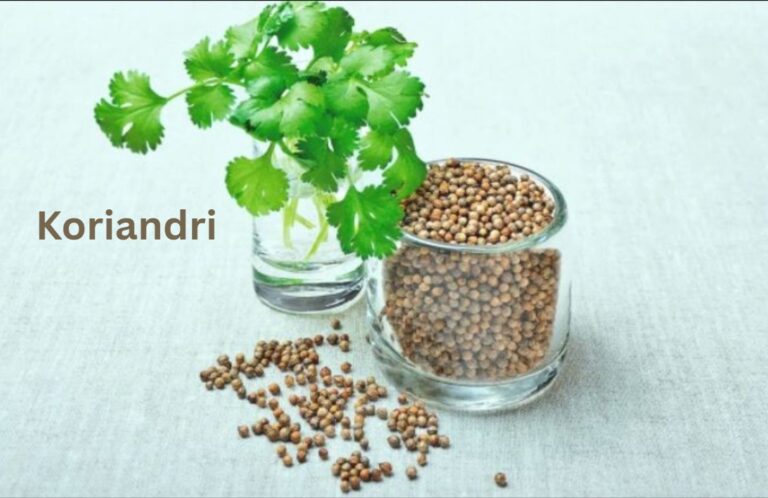
Praline Pecans
What Are Praline Pecans?
Praline pecans are a classic Southern confection made by coating toasted pecans in a rich, buttery sugar mixture that hardens into a crisp, glossy shell. Known for their caramelized sweetness and crunchy texture, praline pecans have become a staple in holiday gifts, dessert toppings, and snack tables across the United States—especially in Louisiana, where the tradition originated. What makes them special is the unique marriage of buttery pecans and cooked sugar syrup, often enhanced with vanilla and cream for depth of flavor. While they may appear simple, praline pecans reflect a deep-rooted culinary tradition that balances comfort food appeal with old-world technique. Whether served on their own, mixed into baked goods, or used as a topping for ice cream and pies, these sweet treats offer a perfect blend of flavor, texture, and nostalgia.
What Is a Praline? The Origins of a Sweet Classic
To understand praline pecans, it’s essential to answer the question: What is a praline? Originally, pralines were a French confection made from almonds coated in caramelized sugar. The treat dates back to the 17th century and is said to have been invented by a French chef serving the diplomat César, duc de Choiseul, Comte du Plessis-Praslin—hence the name “praline.” When French settlers arrived in Louisiana, they adapted the recipe using locally available pecans instead of almonds and added cream or milk to create a softer, creamier texture. This Americanized version of the praline became a cultural icon in the South, and the term “praline” in the U.S. now commonly refers to the pecan-based candy. Today, when people ask what is a praline, the answer depends on where you are—Europeans might imagine caramel-coated almonds, while Americans are more likely to think of creamy, buttery pecans.
The Art of Making Praline Pecans
Crafting the perfect batch of praline pecans requires precision, timing, and high-quality ingredients. The process starts by toasting pecan halves to intensify their flavor and crispness. Meanwhile, a syrup is prepared by boiling sugar (white, brown, or a mix), butter, cream, and sometimes corn syrup. This mixture is cooked to a precise temperature—usually around the soft-ball stage, or 235°F to 240°F—before the pecans are stirred in. As the mixture cools, it thickens and coats the nuts with a glossy, crunchy layer.
It’s essential to stir continuously during this stage to prevent the sugar from crystallizing prematurely or the mixture from burning. Some recipes also include a splash of vanilla extract or a pinch of salt to balance the sweetness. The praline recipe may vary from kitchen to kitchen, but the fundamentals remain consistent: high-quality pecans, caramelized sugar, and proper technique. While the cooking process is short, often just 15 to 20 minutes, the results can rival any gourmet candy shop.
Traditional Southern Roots and Cultural Significance
Praline pecans are more than just candy—they’re a symbol of Southern hospitality, often given as gifts or served during gatherings, holidays, and weddings. In cities like New Orleans, pralines are as iconic as beignets or gumbo. Street vendors and candy shops line the French Quarter, each boasting its own “secret” praline recipe handed down through generations. In Southern households, making pralines is often a family tradition, passed from grandmother to grandchild, especially around the winter holidays. They also appear in church bake sales, farmers markets, and community events, reinforcing their role in regional culture. The experience of biting into a homemade praline pecan often evokes memories of home, warmth, and celebration—making it far more than just a sweet treat.
What Makes a Good Praline Recipe?
A good praline recipe balances sweetness with rich, buttery flavor and features high-quality pecans with a satisfying crunch. The best recipes often use brown sugar for its molasses notes and add a touch of heavy cream or evaporated milk for creaminess. Butter is non-negotiable—it’s what gives pralines their signature richness and velvety finish. Timing and temperature control are also critical: undercooked syrup leads to a runny texture, while overcooked syrup becomes grainy or burnt. Classic recipes avoid shortcuts like microwave cooking and instead rely on stovetop precision to produce consistent results. Spices like cinnamon or nutmeg are sometimes added for variation, and some modern twists include bourbon, chocolate drizzle, or sea salt. However, even with innovations, the heart of a good praline recipe lies in respecting tradition and focusing on flavor and texture.
Health and Nutritional Perspective
While praline pecans are undeniably a treat, they do offer some nutritional value thanks to the pecans themselves. Pecans are a rich source of healthy fats, fiber, magnesium, and antioxidants. However, the addition of sugar, butter, and cream makes them high in calories and not exactly diet-friendly. One ounce of praline pecans can contain over 150 calories and 10–15 grams of sugar, depending on the recipe. As with most sweets, moderation is key. For those looking to make healthier versions, alternatives like coconut sugar, honey, or sugar-free sweeteners can be used, and portion control is essential. Still, their occasional indulgence—especially during festive seasons—can be a justified pleasure, particularly when homemade.
Praline Pecans in Popular Food and Drink
Praline pecans have made their way into everything from baked goods to coffee drinks. One of the most well-known adaptations is the Chestnut Praline Latte from Starbucks, which captures the flavor of roasted nuts and caramelized sugar in a comforting, spiced beverage. The popularity of this seasonal drink has introduced praline flavor to a global audience, sparking curiosity among people asking “what is praline?” even outside the U.S. Additionally, praline pecans are widely used as toppings for pies, cakes, sweet potatoes, and salads. They bring a textural contrast and sweetness that elevates both savory and sweet dishes. Ice cream shops also incorporate praline swirls or pecan pieces into creamy scoops, offering a satisfying crunch in every bite.
Storage and Shelf Life
To maintain freshness, praline pecans should be stored in an airtight container at room temperature. When properly sealed, they can last up to two weeks without losing texture. For longer storage, refrigerating or freezing them is an option, although it may slightly affect their crispness. If frozen, it’s best to thaw them at room temperature before consuming. Avoid humid environments, which can cause the sugar coating to become sticky or soft. Homemade praline pecans are best enjoyed fresh, but well-made batches can retain their flavor and texture for weeks if stored correctly.
Common Mistakes When Making Praline Pecans
One of the biggest mistakes people make when preparing praline pecans is cooking the syrup at the wrong temperature. Failing to use a candy thermometer often results in syrup that’s too soft or too hard, leading to inconsistent coating. Another issue is over-stirring or under-stirring the mixture once the pecans are added—both can result in crystallization or uneven texture. Some novice cooks try to substitute margarine for butter, which compromises the final flavor and richness. Using low-quality pecans or nuts that are not properly toasted also dulls the final product. Finally, rushing the cooling process or not allowing the pralines to set on parchment paper properly can lead to sticky or messy results. Mastering praline pecans requires practice and patience.
Homemade vs. Store-Bought Praline Pecans
There’s a distinct difference between homemade and store-bought praline pecans. While commercial versions are convenient and often mass-produced with preservatives to extend shelf life, they frequently lack the depth and freshness of homemade batches. Most store-bought versions use corn syrup and artificial flavorings, which can taste overly sweet or artificial. In contrast, homemade praline pecans allow full control over ingredients and customization—whether you want them more buttery, less sugary, or infused with spices like cinnamon or nutmeg. That said, several gourmet brands do offer high-quality praline pecans, but they tend to be expensive. Making them at home remains a rewarding and cost-effective alternative, especially during holiday seasons or special occasions.
Pairing Praline Pecans with Other Foods
Praline pecans can elevate a wide range of dishes beyond just desserts. Their caramelized crunch complements soft cheeses like brie or goat cheese on a charcuterie board. They’re also excellent chopped and sprinkled over oatmeal, Greek yogurt, or mixed into granola. In salads, praline pecans provide a sweet contrast to tangy vinaigrettes and bitter greens like arugula or kale. For desserts, they pair beautifully with custards, cheesecakes, and fruit tarts. You can even use them as a crust for meats like pork tenderloin or chicken for a sweet-savory balance. Their versatility in both sweet and savory applications makes them a must-have in any kitchen.
Conclusion: A Sweet Legacy That Endures
Praline pecans are a timeless treat with a rich cultural history and incredible versatility. Whether you’re enjoying them as a snack, a dessert topping, or folded into a gourmet recipe, their combination of crunchy pecans and sugary glaze offers indulgence in every bite. From the streets of New Orleans to modern cafés serving chestnut praline lattes, this confection has proven it can evolve while staying true to its roots. Understanding what a praline is and mastering the praline recipe gives you access to a beloved culinary tradition that transcends generations.
Frequently Asked Questions (FAQs)
Q: What is the difference between a praline and a praline pecan?
A: “Praline” refers to the candy made by caramelizing nuts in sugar, while “praline pecans” specifically use pecans as the nut of choice.
Q: Can I use other nuts besides pecans?
A: Yes, almonds or walnuts can be used, but pecans offer the most traditional and rich flavor.
Q: Are praline pecans gluten-free?
A: Generally, yes—when made with natural ingredients, they are gluten-free. Always check for additives in store-bought versions.
Q: What is the Chestnut Praline Latte?
A: It’s a seasonal Starbucks drink inspired by the nutty, sweet flavors of pralines, particularly those made with chestnuts and caramel.
Q: How do I prevent my praline pecans from becoming sticky?
A: Ensure proper cooking temperature and store them in a dry, airtight container to maintain crispness.





